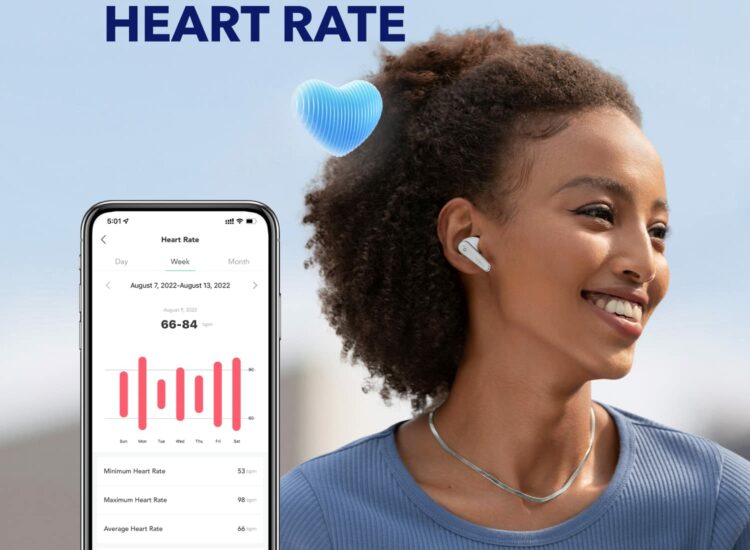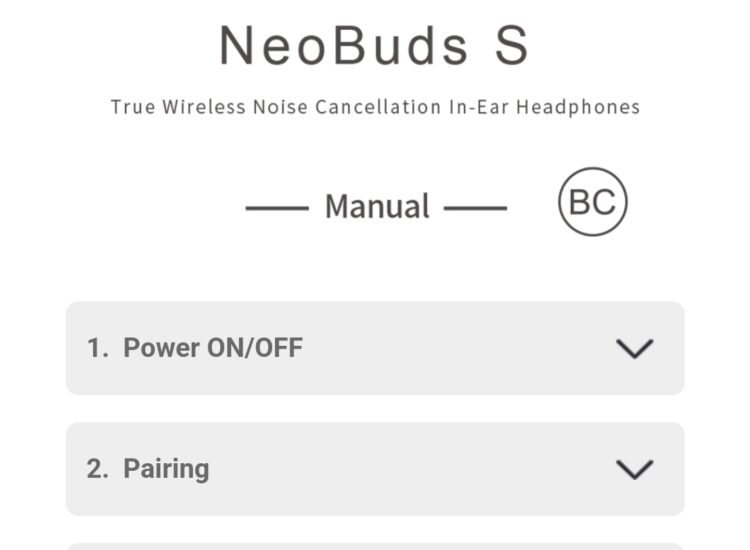Unlocking Revenue Streams: A Comprehensive Guide to Google AdSense
In the vast landscape of the internet, content creators and website owners constantly seek effective ways to monetize their hard work and dedication. Among the various options available, Google AdSense stands out as a prominent and widely adopted platform. It offers a straightforward and accessible method for publishers to earn revenue by displaying relevant advertisements on their websites, blogs, and even YouTube channels. This comprehensive guide will delve into the intricacies of Google AdSense, exploring its fundamental principles, the mechanics of how it operates, the key factors that influence earnings, best practices for maximizing revenue, and the crucial aspects of adhering to AdSense policies.
Toc

1. Introduction to Google AdSense
Google AdSense has become a ubiquitous term in the world of online publishing. For many, it represents a viable pathway to generating income from their online presence. Understanding its core purpose and the role it plays in the digital ecosystem is the first step towards leveraging its potential.
1.1. What is Google AdSense?
At its core, Google AdSense is an advertising program run by Google that allows publishers (website owners, bloggers, content creators) to earn money by displaying ads on their online properties. These ads are sourced from Google’s vast network of advertisers who use Google Ads (formerly AdWords) to promote their products and services. AdSense acts as a bridge, connecting advertisers with publishers who have available ad space on their platforms.
1.2. The Significance of AdSense in Online Monetization
AdSense has played a pivotal role in shaping the internet’s content landscape. It has enabled countless individuals and businesses to create and share valuable content without necessarily charging users directly for access. By providing a relatively simple and automated way to generate revenue, AdSense has fostered a vibrant ecosystem of online information, entertainment, and services. For many publishers, AdSense revenue is a critical component of their overall income, often determining the sustainability of their online ventures.
1.3. Who Can Use Google AdSense? Eligibility Criteria
While AdSense is widely accessible, there are certain eligibility criteria that publishers need to meet to be approved for the program. These criteria are in place to ensure the quality and integrity of the AdSense network. Generally, to be eligible for AdSense, you need to:
- Own a website or have access to a platform: You need to have an online property where you can place the AdSense ad code. This could be a website, a blog, or a YouTube channel (though YouTube has its own specific monetization requirements).
- Have original and high-quality content: Your content should be original, engaging, and valuable to your audience. Google prioritizes websites that offer unique and informative content.
- Comply with AdSense Program Policies: You must adhere to Google’s comprehensive set of policies and guidelines, which cover aspects like content restrictions, ad placement rules, and invalid click activity.
- Be of legal age: You need to be at least 18 years old to participate in the AdSense program.
- Have an active Google account: You’ll need a Google account to sign up for AdSense.
Meeting these criteria is essential for getting your AdSense application approved and maintaining good standing within the program.
1.4. Getting Started with AdSense: A Basic Overview
The process of getting started with AdSense typically involves the following steps:
- Sign up for an AdSense account: Visit the Google AdSense website and complete the signup process, providing information about your website or platform and your personal details.
- Get your site reviewed: Google will review your website to ensure it meets their program policies and quality guidelines. This process can take a few days to a few weeks.
- Implement the AdSense code: Once your application is approved, you will receive a unique code snippet that you need to place on your website within the HTML of the pages where you want ads to appear.
- Customize your ad settings: You can customize the appearance and behavior of your ads, such as the ad size, type, and color scheme, to better match your website’s design.
- Start earning revenue: Once the ad code is implemented, relevant ads will start appearing on your website, and you will earn revenue based on clicks and impressions, depending on the ad format.
This initial setup lays the groundwork for your AdSense journey.
2. Understanding How AdSense Works
The mechanics behind how AdSense operates involve a dynamic interplay between advertisers, Google, and publishers. Understanding this ecosystem is crucial for publishers to effectively utilize the platform.

2.1. The AdSense Ecosystem: Advertisers, Google, and Publishers
The AdSense ecosystem comprises three key players:
- Advertisers: These are businesses and individuals who want to promote their products, services, or websites. They use Google Ads to create and manage their advertising campaigns, specifying their target audience, budget, and the keywords they want to bid on.
- Google: Google acts as the intermediary, providing the platform and technology that connects advertisers with publishers. Google manages the ad auction process, serves the ads on publisher websites, and handles the billing and payments for both advertisers and publishers.
- Publishers: These are the website owners, bloggers, and content creators who have ad space available on their online properties and have integrated the AdSense code. They earn revenue when users interact with the ads displayed on their sites.
This symbiotic relationship allows advertisers to reach a wide audience, publishers to monetize their content, and Google to facilitate the entire process.
2.2. Ad Placement and Integration on Your Website
Once a publisher’s AdSense account is approved, the next crucial step is to strategically place the ad code on their website. The placement of ads significantly impacts their visibility and the likelihood of users clicking on them. AdSense offers various ad units with different sizes and formats that can be integrated into different areas of a webpage, such as:
- Header and Footer: Common locations for banner ads.
- Sidebar: Often used for vertical banner ads or smaller rectangular units.
- Within Content: Integrating ads naturally within the body of articles or blog posts can often lead to higher engagement.
- Above the Fold: Placing ads in the visible portion of the webpage without requiring scrolling can increase their viewability.
Publishers need to experiment with different ad placements to find what works best for their website’s layout and user experience, while also adhering to AdSense placement policies.
2.3. How Google Determines Which Ads to Show
Google uses sophisticated algorithms to determine which ads to display on a publisher’s website. The primary goal is to show ads that are relevant to the website’s content and the interests of the users visiting it. This relevance is crucial for maximizing the chances of users clicking on the ads, which ultimately benefits both the advertiser and the publisher.
Google considers various factors when selecting ads, including:
- Website Content: Google analyzes the content of the webpage where the ad code is placed to understand its topic and context.
- User Interests: Google uses data about users’ Browse history and online behavior to infer their interests and show them relevant ads.
- Advertiser Bids: Advertisers bid on specific keywords and demographics. Google’s auction system selects the winning bids to display on relevant publisher websites.
- Ad Quality: Google also considers the quality and relevance of the ad itself when making its selection.
This dynamic process ensures that users are more likely to see ads that are of interest to them, leading to better engagement and higher revenue potential for publishers.
2.4. Tracking Clicks and Impressions
AdSense provides publishers with detailed reports on the performance of the ads displayed on their websites. Two key metrics that are tracked are clicks and impressions:
- Clicks: This refers to the number of times users click on the ads displayed on your website. For most ad formats, publishers earn revenue when a user clicks on an ad.
- Impressions: This refers to the number of times an ad is displayed on your webpage, regardless of whether it is clicked or not. Some ad formats, particularly those within the Google Display Network, may also generate revenue based on the number of impressions (often referred to as CPM, or cost per mille, meaning cost per thousand impressions).
Tracking these metrics allows publishers to understand how their ads are being interacted with and to identify areas for optimization.
2.5. Earning Revenue: The Pay-Per-Click (PPC) Model
The primary way that publishers earn revenue through AdSense is through the pay-per-click (PPC) model. This means that you earn a certain amount of money each time a user clicks on an ad displayed on your website. The amount you earn per click can vary significantly depending on factors such as the advertiser’s bid, the competition for the keyword, the relevance of the ad to the user, and the geographic location of the click.
While PPC is the most common revenue model, some ad formats, like those focused on branding and reach within the Display Network, may also offer revenue based on impressions. Understanding the different revenue models associated with various ad formats is important for publishers to make informed decisions about their ad strategy.
3. Key Factors Influencing AdSense Earnings
The amount of revenue a publisher can earn through AdSense is influenced by a multitude of factors. Understanding these factors is crucial for publishers who want to maximize their earning potential.

3.1. Website Traffic and Audience Quality
One of the most significant factors affecting AdSense earnings is the volume and quality of traffic to your website. Generally, the more visitors your website receives, the more opportunities there are for ads to be displayed and clicked. However, it’s not just about the sheer number of visitors; the quality of your audience also matters. Traffic from users who are genuinely interested in your content and the topics covered on your website is more likely to engage with relevant ads. Building a targeted and engaged audience is therefore essential for maximizing AdSense revenue.
3.2. Ad Placement and Layout Optimization
As mentioned earlier, the placement of ads on your website plays a critical role in their visibility and click-through rate (CTR). Strategic ad placement involves experimenting with different locations on your pages to find the spots where ads are most likely to be seen and clicked without negatively impacting the user experience. Factors to consider include placing ads above the fold, within the main content area, and in the sidebar. The overall layout and design of your website can also influence ad performance. A clean, user-friendly design that makes it easy for visitors to navigate and find information can lead to better engagement with ads.
3.3. Ad Formats and Their Impact
AdSense offers a variety of ad formats, including display ads (banner ads, rectangular ads), native ads (ads that blend seamlessly with your content), in-article ads, in-feed ads, and more. Different ad formats can have varying levels of performance depending on your website’s layout and content. Experimenting with different ad formats and sizes can help you identify which ones generate the highest CTR and revenue for your specific website. For example, larger ad units tend to perform better than smaller ones, and responsive ad units that adapt to different screen sizes are crucial for mobile optimization.
3.4. Niche and Content Relevance
The niche or topic of your website can significantly impact your AdSense earnings. Certain niches, particularly those related to finance, technology, and legal services, often have higher advertiser bids, which can translate to higher revenue per click for publishers. The relevance of the ads displayed to your website’s content and your audience’s interests is also crucial. When users see ads that are genuinely relevant to what they are looking for, they are more likely to click on them. Therefore, creating high-quality content that attracts a targeted audience interested in specific topics can lead to better AdSense performance.
3.5. Geographic Location of Your Audience
The geographic location of your website’s audience can also influence your AdSense earnings. Traffic from countries with higher advertising spending and more developed economies often results in higher revenue per click. This is because advertisers in these regions are typically willing to pay more for clicks from users in their target markets. While you may not have direct control over the geographic location of your audience, understanding where your traffic comes from can provide valuable context for interpreting your AdSense earnings.
4. Best Practices for Maximizing AdSense Revenue
While there is no magic formula for guaranteed AdSense success, there are several best practices that publishers can follow to increase their chances of maximizing their revenue.

4.1. High-Quality and Engaging Content Creation
The foundation of any successful website and a key driver of AdSense revenue is high-quality and engaging content. Creating valuable, informative, and entertaining content will attract and retain visitors, leading to more page views and opportunities for ad impressions and clicks. Focus on creating original content that caters to the interests of your target audience and keeps them coming back for more.
4.2. Strategic Ad Placement for Optimal Visibility
Experiment with different ad placements on your website to find the locations that offer the best visibility and CTR without disrupting the user experience. Consider placing ads:
- Above the fold: So they are immediately visible to visitors.
- Within the main content: Integrating ads naturally within your articles can lead to higher engagement.
- Near navigation elements: Making ads easily accessible to users as they browse your site.
Use heatmaps and analytics tools to understand how users interact with your website and identify optimal ad placement locations.
4.3. Experimenting with Different Ad Formats
AdSense offers a variety of ad formats, and it’s beneficial to experiment with different ones to see which perform best on your website. Consider trying:
- Responsive ads: These ads automatically adjust their size to fit different screen sizes and layouts, which is crucial for mobile optimization.
- Native ads: These ads are designed to blend seamlessly with the look and feel of your website content, often resulting in higher engagement.
- In-article and in-feed ads: These formats are specifically designed to be placed within the flow of your content, providing a less intrusive advertising experience.
Regularly review your ad format performance in your AdSense reports and make adjustments as needed.
4.4. Utilizing AdSense Auto Ads
AdSense Auto ads are a feature that uses Google’s machine learning to automatically place and optimize ads on your website. By simply placing a single piece of code on your site, Auto ads will analyze your page structure and content to determine the best locations and formats for ads. This can be a convenient way to optimize your ad placement without having to manually configure individual ad units. However, it’s still important to monitor the performance of Auto ads and make adjustments if necessary to ensure they are not negatively impacting the user experience.
4.5. Optimizing for Mobile Devices
With the increasing prevalence of mobile Browse, it’s crucial to ensure that your website and your AdSense ads are optimized for mobile devices. This includes using responsive website design and choosing ad formats that work well on smaller screens. A poor mobile experience can lead to lower engagement and reduced AdSense revenue.
4.6. Understanding and Utilizing AdSense Reports
Regularly reviewing your AdSense reports is essential for understanding your earnings, identifying trends, and making informed decisions about optimization. Pay attention to metrics like page views, impressions, clicks, CTR, and estimated earnings. Analyze which pages and ad units are performing best and identify areas where you can make improvements.
4.7. Avoiding Common Pitfalls and Policy Violations
Adhering to Google’s AdSense Program Policies is paramount for maintaining your account and ensuring continued revenue generation. Avoid common pitfalls such as:
- Clicking on your own ads: This is strictly prohibited and can lead to account suspension.
- Encouraging others to click on your ads: Asking friends or family to click on your ads is also a policy violation.
- Placing ads in deceptive ways: Ensure that ads are clearly labeled and not placed in a way that tricks users into clicking them.
- Violating content policies: Avoid displaying ads on websites with prohibited content, such as adult material, violent content, or content that promotes illegal activities.
Familiarize yourself thoroughly with the AdSense policies and guidelines to avoid any violations that could jeopardize your account.
5. Navigating AdSense Policies and Guidelines
Google’s AdSense Program Policies are in place to ensure a positive experience for users, advertisers, and publishers alike. Understanding and adhering to these policies is crucial for maintaining a healthy AdSense account and avoiding penalties.
5.1. The Importance of AdSense Program Policies
The AdSense Program Policies outline the rules and regulations that publishers must follow when using the platform. These policies cover a wide range of topics, including content guidelines, ad placement requirements, and rules against invalid click activity. Adhering to these policies is not just a suggestion; it’s a requirement for participating in the AdSense program. Violations can lead to warnings, ad serving limitations, or even permanent account suspension.
5.2. Understanding Prohibited Content
Google has specific guidelines regarding the type of content that is not allowed to display AdSense ads. This includes content that is illegal, promotes harmful or dangerous activities, is sexually explicit, incites hatred or violence, or misrepresents information. Publishers are responsible for ensuring that their website content complies with these policies. Google regularly reviews websites participating in the AdSense program, and violations can result in serious consequences.
5.3. Guidelines for Ad Placement and Implementation
The AdSense policies also provide detailed guidelines on how ads should be placed and implemented on your website. These guidelines aim to ensure that ads are displayed in a way that is not deceptive, intrusive, or disruptive to the user experience. Some key aspects of ad placement policies include:
- Ad labeling: Ads must be clearly labeled as advertisements so that users can distinguish them from organic content.
- Avoiding accidental clicks: Ads should not be placed too close to interactive elements like navigation menus or download buttons, where users might accidentally click on them.
- Limited number of ads per page: While there is no strict limit on the number of ads you can place on a page, it’s important to ensure that the number of ads does not outweigh the content and negatively impact the user experience.
- No incentivizing clicks: You are not allowed to ask or incentivize users to click on your ads.
Carefully review and understand the AdSense ad placement policies to ensure your implementation complies with Google’s requirements.
5.4. Avoiding Invalid Clicks and Impressions
Invalid clicks and impressions refer to any clicks or impressions that are generated by artificial means or with the intention of fraudulently increasing revenue. This includes clicks from your own IP address, clicks generated by bots or automated traffic, and clicks resulting from encouraging others to click on your ads. Google has sophisticated systems in place to detect and filter out invalid activity, and engaging in such practices can lead to severe penalties, including account suspension and forfeiture of earnings. It’s crucial to maintain the integrity of the AdSense network by ensuring that all clicks and impressions are genuine and come from legitimate user interest.
5.5. Consequences of Policy Violations and Account Suspension
Violating Google’s AdSense Program Policies can have serious consequences for publishers. Depending on the severity and frequency of the violations, Google may take actions such as:
- Issuing warnings: For minor or first-time violations, Google may send a warning email asking you to address the issue.
- Limiting ad serving: Google may temporarily limit the number of ads that can be displayed on your website.
- Disabling ad serving on specific pages or your entire site: In more serious cases, Google may disable ad serving on the pages that violate the policies or even on your entire website.
- Suspending or terminating your AdSense account: For severe or repeated violations, Google may permanently suspend or terminate your AdSense account, resulting in the loss of all accrued earnings.
It is therefore imperative for all AdSense publishers to thoroughly understand and consistently adhere to the program policies to maintain a healthy and active account.
By understanding the intricacies of Google AdSense, implementing best practices, and diligently adhering to program policies, content creators and website owners can effectively unlock revenue streams from their online properties and contribute to a thriving and informative internet ecosystem. The journey with AdSense requires continuous learning, adaptation, and a commitment to providing value to both users and advertisers.

















